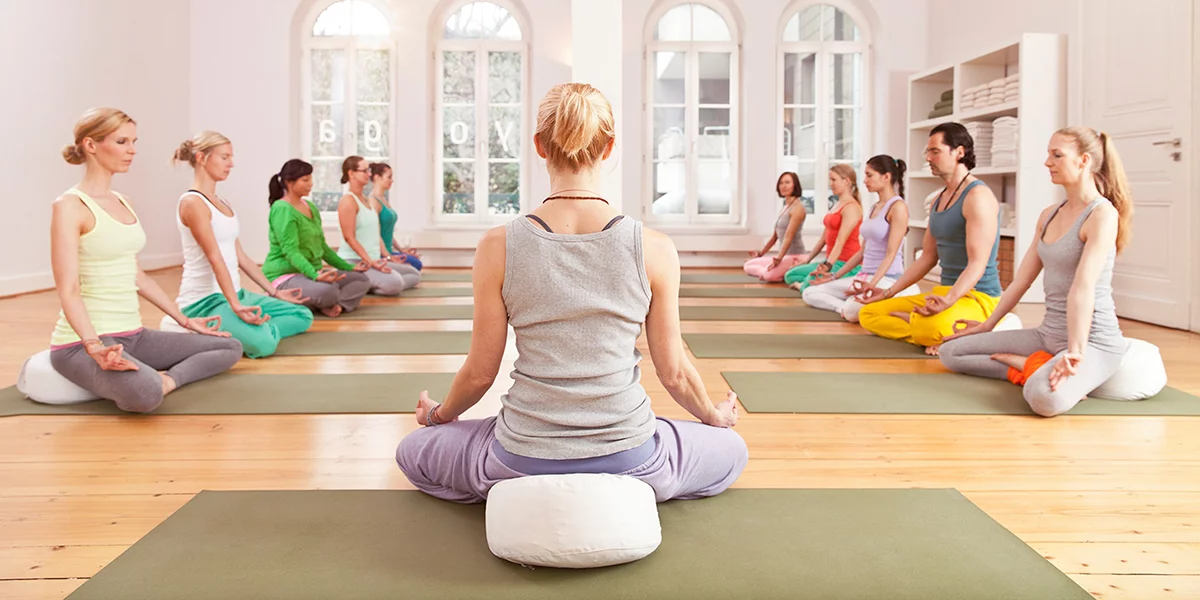For Teachers
Introduction to Yoga Philosophy

Yoga is often seen as a way to exercise the body, but at its heart, it is a path to self-awareness, inner peace, and spiritual growth. As someone who has practiced yoga for many years, I’ve found that learning about yoga philosophy has deepened my practice in ways I couldn’t have imagined. Understanding the underlying principles of yoga can help to bring more clarity, purpose, and mindfulness into your everyday life. In this article, I’ll provide an introduction to yoga philosophy and offer insights into how its teachings can benefit your practice, both on and off the mat.
What is Yoga Philosophy?
Yoga philosophy is a framework for understanding the nature of existence, the mind, and the self. At its core, yoga is about union — a connection between the body, mind, and spirit. This connection isn’t just achieved through physical postures; it’s a way of seeing the world and interacting with it more consciously. The foundation of yoga philosophy is grounded in several ancient texts, the most well-known being the Yoga Sutras of Patanjali. These texts provide a roadmap for living a balanced and fulfilled life.
When I first encountered yoga, I was primarily interested in its physical benefits. But over time, as I delved deeper into the philosophy, I realized that yoga is not just about the body—it’s a holistic practice that includes mental and emotional aspects as well. In fact, the physical postures or asanas are just one part of a much larger system that helps guide us toward greater awareness and spiritual growth. An introduction to yoga philosophy will help you see yoga as a way of living that touches all aspects of your life, from how you relate to others to how you deal with your emotions and thoughts.
The Eight Limbs of Yoga
Yoga philosophy, particularly the teachings of Patanjali, outlines a system of eight steps, known as the “Eight Limbs of Yoga.” These eight limbs provide a comprehensive guide to living a life of balance and harmony, and they address everything from personal conduct to meditation practices. Let’s look at each of these limbs in more detail.
Yama (Ethical Guidelines)
The first limb of yoga, Yama, focuses on ethical behavior. It teaches us to live with integrity, kindness, and respect for others. The five yamas are non-violence (ahimsa), truthfulness (satya), non-stealing (asteya), non-possessiveness (aparigraha), and non-attachment (brahmacharya). These ethical principles serve as guidelines for interacting with the world in a way that promotes peace and harmony.
Incorporating Yama into my life has helped me become more mindful of my actions and their impact on others. I’ve found that when I live by these principles, I feel a greater sense of calm and clarity, both in my practice and in my daily interactions.
Niyama (Personal Observances)
The second limb, Niyama, refers to personal observances and self-discipline. It is about creating habits and practices that support your overall well-being and spiritual growth. The five niyamas are cleanliness (saucha), contentment (santosha), self-discipline (tapas), self-study (svadhyaya), and devotion (ishvara pranidhana).
Practicing Niyama has encouraged me to cultivate inner contentment and self-awareness. These personal observances invite us to look inward and create a life that is rooted in positivity and spiritual growth. For example, I find that the practice of self-study (svadhyaya) helps me gain deeper insight into my thoughts, feelings, and actions, allowing me to grow as both a person and a teacher.
Asana (Physical Postures)
Asana, the third limb of yoga, refers to the physical postures that most people associate with yoga. While yoga is much more than just a series of poses, the practice of asana is important because it prepares the body for the other aspects of yoga. It helps to build strength, flexibility, and balance, while also promoting awareness and focus.
For me, asana is where the physical and mental aspects of yoga meet. The practice of moving the body in a mindful way not only promotes physical health but also helps me release mental tension and find peace in the present moment.
Pranayama (Breath Control)
Pranayama, the fourth limb, involves controlling the breath. The breath is the bridge between the body and mind, and by learning to control it, we can achieve greater mental clarity and emotional balance. Techniques such as deep breathing, alternate nostril breathing, and kapalabhati are designed to calm the nervous system and increase energy flow.
I’ve found that practicing pranayama has greatly improved my ability to stay calm and focused, both in my yoga practice and in my everyday life. By slowing down the breath and becoming more mindful of it, I can reduce stress and bring more awareness to the present moment.
Pratyahara (Withdrawal of the Senses)
Pratyahara, the fifth limb, teaches us to withdraw from the external distractions that often overwhelm our senses. In a world filled with constant noise and stimulation, learning to detach from sensory input can help us cultivate inner peace and mindfulness. Through meditation and mindful practice, we can begin to shift our attention inward and connect with our true essence.
For me, practicing pratyahara is a way of creating space for quiet reflection and self-awareness. It allows me to step back from the constant chatter of the mind and reconnect with what is truly important.
Dharana (Concentration)
Dharana, the sixth limb, refers to concentration. It involves focusing the mind on a single point of attention, such as the breath, a mantra, or an object. Concentration is a powerful tool for quieting the mind and cultivating mental clarity.
In my practice, I find that concentration is a key element of meditation. By training the mind to focus on one thing at a time, I can begin to let go of distractions and deepen my meditation practice. Dharana is a powerful technique for improving mental clarity and cultivating inner peace.
Dhyana (Meditation)
Dhyana, the seventh limb, is meditation. Meditation is the practice of quieting the mind and experiencing a state of deep presence. It is through meditation that we begin to tap into the deeper aspects of our consciousness and experience a sense of connection with the universe.
For me, meditation is where the transformative power of yoga really shines. Through regular practice, I’ve found that meditation allows me to connect with a deeper sense of stillness and peace, even amidst the chaos of daily life.
Samadhi (Enlightenment)
The final limb, Samadhi, is the ultimate goal of yoga—enlightenment. It is the state of union with the divine, where the mind is completely still and free from all distractions. While Samadhi may seem distant, it is something that can be experienced in moments of deep meditation and presence.
Samadhi represents the highest level of spiritual awakening, where we transcend the ego and experience unity with the universe. For most of us, Samadhi is a long-term goal, but it serves as an inspiration and a reminder of the transformative potential of yoga.
Yoga Philosophy in Everyday Life
Yoga philosophy isn’t just something to practice on the mat—it’s a way of living. By incorporating the teachings of yoga into our daily lives, we can experience greater peace, clarity, and contentment. From the ethical guidelines of Yama to the meditation practices of Dhyana, yoga philosophy offers practical tools for creating a balanced and meaningful life.
In my own life, I’ve found that integrating these teachings has brought me closer to a sense of inner peace and fulfillment. Yoga philosophy has taught me to be more mindful, compassionate, and present in everything I do.
Conclusion
An introduction to yoga philosophy is just the beginning of a lifelong journey. As you explore the teachings of yoga, you’ll find that they have the power to transform your body, mind, and spirit. Whether you’re a seasoned practitioner or a beginner, yoga philosophy provides a wealth of wisdom to guide you on your path toward greater awareness and inner peace.










